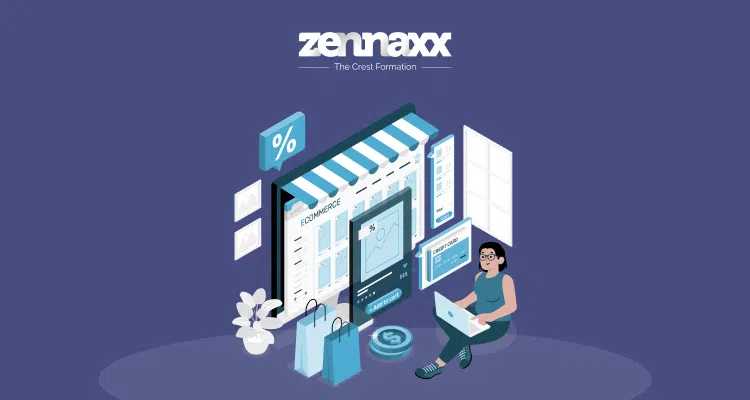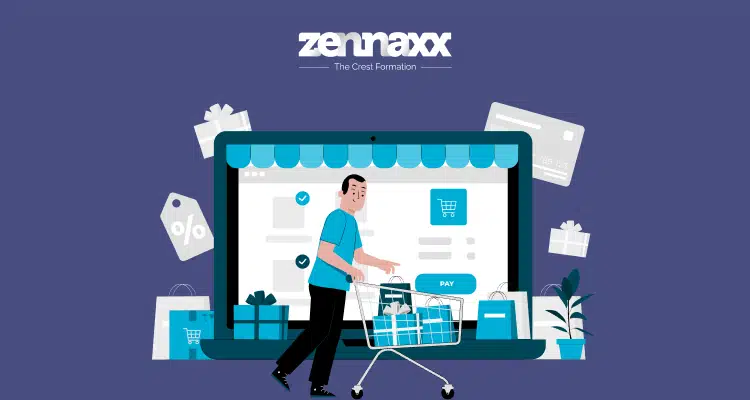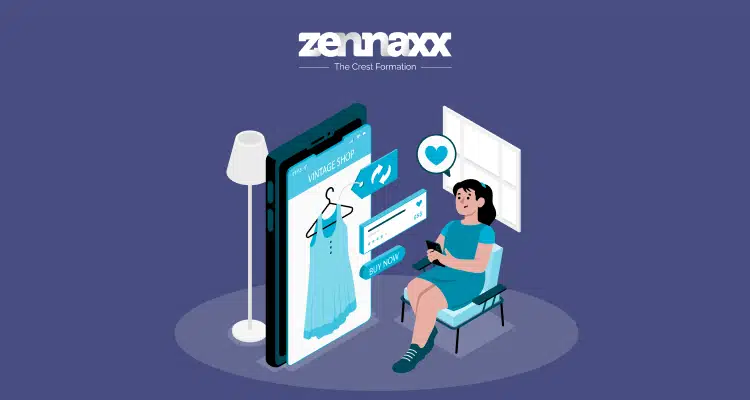In the race for e-commerce transformation, the market needs an outstanding customer experience to become the first choice of customers.
What is the right CX, and how to improve it for your store? Your customers have several brands to choose from online. A better quality e-commerce customer experience attracts more traffic than others.
If you are doing business with the help of an e-commerce brand, you can sense that more than quality products are needed to survive in the market.
Yes, the product’s quality helps you get customers back, but bringing new customers takes work on the one hand.
This blog explores various facts about transforming the e-commerce customer experience. We aim to understand it better. We also learn new e-commerce strategies.
This is a perfect guide for developing positive experiences with buyers.
How do clear product descriptions and better customer reviews help build e-commerce strategies? Can they transform the entire customer experience? These strategies aimed to positively impact customer satisfaction, loyalty, and overall brand perception.

Understanding the Pillars of E-commerce Customer Experience
A successful e-commerce transformation business hinges on the pillars of customer experience. Customer experience shapes the journey from initial interaction to post-purchase engagement.
A user-friendly website design is critical to satisfying customers. It has responsive and intuitive navigation for a positive experience.
Personalization in customer engagement is one pillar of customer experience (CX). It offers product recommendations and communication.
Customer experience grows with unique customer support like chat and providing product-related FAQs. The second is post-purchase engagement, offering new recommendations and continuing customer communication.
Community-building initiatives, such as loyalty programs and social media engagement, foster brand loyalty.
Continuous improvement through analytics and feedback allows businesses to adapt. It helps them keep up with evolving customer expectations.
E-commerce enterprises can cultivate a comprehensive and positive customer experience. They can do this by focusing on these pillars. This will foster satisfaction, loyalty programs, and sustained success.
Personalizing the E-commerce Journey for Each Customer
Personalizing the e-commerce strategies for each customer is a strategic approach. It involves tailoring the online shopping experience to individual preferences, behaviours, and needs.
This level of personalization helps to get customer engagement, satisfaction, and loyalty. Some key elements contribute to a personalized e-commerce journey:
User Profiling:
- Divide customers into segments based on demographics, purchase history, and behaviour. Use the features to create targeted marketing strategies.
- Monitor and analyze customer preferences, such as product categories, brands, and styles. This helps us anticipate future needs.
Product Recommendations:
- We use AI algorithms to give personalized product recommendations. We use browsing history, past purchases, and similar customer profiles.
- Recommend additional products or upgrades tailored to the customer’s current choices, optimizing online shopping strategies.
Personalized Content:
- Create a landing page to showcase products and content. It should align with the customer’s interests and preferences.
- Display personalized content, such as banners or promotional offers. It should resonate with the customer’s history and behaviour on the site.
Personalized Communication:
- Craft personalized email campaigns. They should speak to the customer’s preferences, purchase history, and engagement level.
- Use push notifications or in-app messages to deliver timely and relevant information. For example, restock alerts or personalized promotions.
Feedback and Surveys:
- Use surveys to gather feedback and understand customer satisfaction. This helps improve continuously.
- Use customer feedback to refine and adapt personalization strategies. Ensure they align with changing preferences.
Loyalty Programs:
- Tailor loyalty program rewards based on individual customer behaviours. This encourages continued engagement and repeat purchases.
E-commerce businesses can create a more individualized and engaging customer journey. They can do this by implementing personalized strategies.
This fosters a strong connection between the customer and the brand. This can lead to increased customer satisfaction, loyalty, and long-term success.
Planning web development?
Ready to elevate your web projects? Partner with us for seamless web app solutions.
Leveraging Social Media to Enhance Customer Engagement
Social media has become an indispensable tool for e-commerce transformation. They use it to engage with customers.
This section will delve into effective social media marketing strategies. It will also explore how blog posts impact online shopping strategies.
Social media marketing involves creating and sharing product content on social media platforms. We do this to achieve marketing and branding goals. SMM helps to reach a broader audience.
It also creates brand awareness and drives traffic to other engagement channels. Social media platforms serve as channels for communication and interaction with the audience. (e.g., Facebook, Twitter, Instagram, LinkedIn).
We target and coordinate relevant marketing campaigns. They promote a product, service, or brand. Campaigns generate excitement and encourage user participation. They also provide a focused approach to interacting with the audience.
Moreover, blog posts try to establish thought leadership. They provide valuable information and keep the audience informed and engaged.
Google Analytics, social media analytics, etc., provide insights into user behaviour and engagement. Some analytics tools help businesses understand their audience.
They also track engagement and make data-driven decisions to improve customer interactions. We implement privacy measures to protect customer data.
This fosters trust. Proper use of social media helps understand customer needs and basic product needs.
Optimizing Mobile User Experience in E-commerce
As mobile shopping becomes the norm, businesses must prioritize and optimize the mobile user experience (UX). Responsive design is a cornerstone of mobile optimization and customer experience enhancement.
It involves creating websites that adapt seamlessly to different screen sizes and resolutions.
E-commerce platforms must prioritize the development of a mobile-friendly interface. They should do this when creating an e-commerce store. Optimal product pages on mobile devices should include high-quality images.
They should also have clear and concise product descriptions and intuitive navigation. Reducing load times is paramount for preventing user frustration and minimizing bounce rates.
Reducing the number of purchase steps minimizes user frustration. It also contributes to higher conversion rates. Lengthy and complex forms can deter mobile users from completing transactions.
Optimizing conditions for mobile involves minimizing the number of fields. It also enables auto-fill options and provides clear error messages. These steps ensure a smoother and faster input process.
A fast and responsive website directly correlates with increased user satisfaction.
Positive experiences lead to repeat visits. They also foster customer loyalty. Ultimately, they impact the bottom line of e-commerce businesses.
Streamlining the Checkout Process for Higher Conversion:
A lengthy and complex process primarily contributes to cart abandonment. Streamlining the journey involves minimizing the steps required to complete a purchase.
Requiring users to create an account before completing a purchase can be a deterrent. Offering a guest checkout option allows users to purchase without creating an account. This reduces barriers to entry.
It expedites the checkout process. It caters to users who prefer a swift, hassle-free transaction.
One-click purchasing can take the simplification of the checkout process a step further. Businesses can enable customers to make repeat purchases with a single click.
They do this by securely storing user information and payment details. This feature reduces the time and effort required and fosters customer loyalty and repeat business.
A significant portion of online transactions happens on mobile devices. It’s crucial to optimize the checkout process for mobile users. The mobile-friendly design includes large, easily clickable buttons.
Users are more likely to complete a purchase when they trust the payment methods. They need to feel confident about their security and reliability.
Building a Community Around Your E-commerce Brand
User-generated content (UGC) is vital for building vibrant, engaged brand communities. Its power has become essential. Actively encourage your customers to share their experiences with your products.
Whether through reviews, testimonials, or social media posts, soliciting and celebrating customer contributions not only provides valuable feedback. It also transforms customers into active participants in your brand story.
Feature user-generated content prominently on your e-commerce platform and social media channels. This acknowledges and appreciates your customers. It also serves as a powerful endorsement for your brand.
Seeing real people use and enjoy your products creates a relatable, trustworthy image. Initiate contests or challenges. Encourage customers to showcase their creativity and product usage. This not only sparks enthusiasm but also generates a stream of UGC.
These initiatives deepen engagement and foster a sense of community participation. They might include a photo contest, a video challenge, or a storytelling competition.
Actively monitor UGC across various platforms and respond promptly. Acknowledge and engage with user-generated content on social media or your website. This shows that your brand values its community. This responsiveness further strengthens the sense of belonging.
Businesses can create a community that promotes loyalty and serves as a powerful marketing force.
They can do this by actively involving customers in the brand narrative. They can showcase their content and create engagement opportunities and also foster peer interactions.
Implementing Omnichannel Strategies for Seamless Shopping
The modern consumer expects flexibility and convenience. Adopting an omnichannel approach addresses this expectation. It allows customers to transition between online and offline channels seamlessly.
This enhances customer satisfaction. It also fosters brand loyalty. Customers can engage with the brand in a way that suits their preferences and needs.
Central to successful omnichannel strategies is the intelligent use of customer data. Retailers can use data analytics to understand customer behaviour, preferences, and purchase history.
A customer may start shopping online and finish in-store, or vice versa. The experience should be smooth.
Technologies, such as augmented reality for virtual try-ons, chatbots for instant customer assistance, and RFID for enhanced inventory visibility, can improve the overall shopping experience.
They can also contribute to a seamless omnichannel strategy. Use consistent messaging, branding, and promotional offers across all touch-points. This avoids confusion and reinforces the brand identity.
Want to Automate Your Business Process With a Software Solution?
Zennaxx, a leading software development firm in Canada, has delivered 700+ bespoke solutions spanning various industries.
Harnessing Customer Feedback to Drive Continuous Improvement
Customer feedback is a valuable source of insights. Businesses seek it for continuous improvement. Companies can make informed decisions by leveraging feedback. This can positively impact the overall customer experience.
The first step in understanding customer sentiments is to design satisfaction surveys. These surveys should elicit meaningful responses. These surveys are effective because they have carefully chosen questions. The format is user-friendly. They also balance quantitative and qualitative inquiries.
Use tools like surveys or pop-up prompts right after a purchase. Get instant feedback from customers while their experience is still recent. Businesses can determine how satisfied customers are using measures like Net Promoter Score (NPS) or Customer Satisfaction (CSAT).
Customer feedback surveys offer a lens into pain points and improvement opportunities. Businesses can identify recurring issues or trends in customer comments.
Doing so allows them to pinpoint specific areas that need immediate attention or strategic enhancement. Transparently communicating these changes to customers reinforces the brand’s commitment to improvement.
Invest in advanced analytics tools to process and analyze large datasets efficiently. This iterative process enhances the overall customer experience. It also positions the business as responsive to customer needs, fostering loyalty and long-term success.
Improving Checkout Process in E-commerce:
Implement progress indicators. They clearly show customers the steps in the checkout process. This transparency helps manage expectations.
It also provides a sense of control, allowing users to understand where they are.
Consider consolidating the checkout process into a single, well-designed page. This reduces the need for users to navigate through multiple pages.
It minimizes the chances of distraction or abandonment. A single-page checkout can enhance efficiency and create a smoother user experience.
Display trust seals from reputable security providers. Include social proof, such as customer reviews or testimonials on e-commerce stores.
This will instill confidence. Demonstrating that others have had positive experiences with your brand reinforces trust. It can also positively influence purchasing decisions.
Also Read: How to Build a SaaS Product From Scratch
Conclusion: Elevating E-commerce Through Exceptional CX
The journey to transforming e-commerce strategies for customer experience enhancement gives a multifaceted approach. Throughout this exploration, we have examined various facets of enhancing customer experience (CX).
Each plays a pivotal role in transforming e-commerce businesses. Businesses can use data-driven insights and advanced analytics. They can tailor their offerings to individual customer preferences. This creates a connection that goes beyond a transactional relationship.
The influence of social media in shaping consumer behaviour. Businesses using social platforms effectively can build a community of loyal followers. Elevating the customer experience is more than just a survival strategy.
It is a blueprint for sustained growth, success, and resilience in the dynamic world of e-commerce. Businesses are navigating challenges and opportunities. The commitment to exceptional CX remains a guiding principle. It’s for those seeking to thrive in the digital age.


